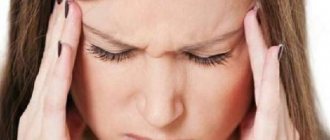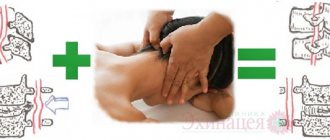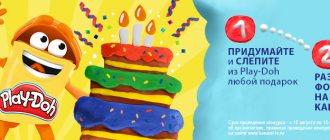Buying good medicine for high blood pressure is not easy. A pharmacist at a pharmacy will rarely help; he will immediately send you to a doctor. Is it really so difficult to recommend a reliable drug at an affordable price? Let's try to understand the types of drugs and the principles of taking them.
Get all the necessary tests at a discount of 10% to 25% using the promotional code “MOESHEALTH”. Visit one of the many conveniently located KDL medical offices https://bit.ly/3gIM9wP or call a nurse for free to collect biomaterial using the innovative laboratory service LifeTime https://bit.ly/3yd9Pj2
Hypertension
Few people in our time have not heard anything about hypertension, or high blood pressure. This is not surprising - after all, in the modern world, every third adult is faced with this problem and is forced to look for ways to solve it.
Blood pressure is considered elevated if its value is 140/90 mmHg. Art. or higher, regardless of the person's age. Most often, high blood pressure is an independent disease called hypertension. But sometimes hypertension is a symptom of some other disease (for example, kidney disease, thyroid disease, adrenal gland disease). In this case, in addition to reducing the numbers, the underlying disease must be treated.
What medications help cope with headaches due to high blood pressure?
Depending on the cause that led to the increase in blood pressure, different groups of drugs can help, and there are quite a few of them. These can be sedatives, antispasmodics, anti-inflammatory drugs and others. The doctor prescribes appropriate medications taking into account the patient’s condition, age and weight.
Treatment can be carried out with drugs, folk remedies, massages, phytotherapeutic and physiotherapeutic procedures.
Antispasmodic
There are many reasons why blood vessels can lose their elasticity and strength. The formation of cholesterol plaques and neurological diseases lead to seizures. Antispasmodics help relieve unpleasant symptoms only at the beginning of the disease. They have an analgesic effect. Antispasmodics should not be taken for a long time and are used as a sleep aid.
Myotropic antispasmodics are indicated for severe vasoconstriction, which has led to an increase in blood pressure. They dilate blood vessels and activate the flow of oxygen and nutrients to tissues. As a result, the pain subsides. Such drugs as “Papaverine”, “Revalgin”, “No-shpa”, “Dexalgin” are considered effective.
Neurotropic antispasmodics block nerve impulses, causing muscles to relax and pain to subside. Popular drugs include: Buscopan, Arpenal, Aprofen.
Other drugs for spastic headaches: magnesium sulfate, Phenobarbital, Bendazol, Dibazol, Tempalgin. The active ingredient in these drugs relaxes muscles and promotes vasodilation. This restores blood flow through the blood vessels, reduces pain and normalizes blood pressure.
Pharmacological
Initially, tablets are selected that quickly relieve pain. This should be done by a qualified specialist, as this symptom develops against the background of an increase in blood pressure readings. You should choose a drug that is effective in relieving pain and normalizing blood pressure.
Anticholinergic
This group of drugs is prescribed if neuralgia is the cause of deterioration in health. The action of the active ingredients is aimed at blocking the production of acetylcholine, which stimulates nerve cells. Muscle spasms disappear, blood pressure decreases, pain disappears:
- "Temechin" dilates blood vessels and has a pronounced antispasmodic effect. It is prescribed at a dose of 1 mg 3-4 times a day. Treatment may take up to a month. Can be combined with other antihypertensive drugs.
- The drug "Benzohexonium" is available in the form of an injection solution. After taking the drug, a drop in pressure is observed within 5-10 minutes. During the day it is allowed to administer the drug up to 4 times.
- "Gigronium" is available in powder form for injection.
The drug should be taken with caution, strictly observing the dosage. They not only quickly relieve pain, but also quickly lower blood pressure. Side effects occur frequently.
Tranquilizers
In case of a sharp increase in systolic and diastolic pressure, as well as the appearance of tachycardia, increased sweating, chills, dry mouth and severe pressing headache, sedatives are prescribed. Drugs in this group include: Phenazepam, Xanax, Teraligen, Valium.
"Phenazepam" has an anticonvulsant, hypnotic and sedative effect, relaxes muscles, eliminates anxiety, fear, and reduces emotional stress. The action of the active substance lasts up to 6 hours. The duration of treatment is two weeks. Towards the end of the treatment course, the dose is gradually reduced.
This group of drugs can cause side effects. Visiting them is recommended in case of prolonged stress, anxiety and restlessness.
Anti-inflammatory non-steroidal drugs (PNS)
Non-steroidal drugs do not change blood pressure parameters and do not act on the cause of the disease, but only alleviate its symptoms. Treatment is carried out with drugs such as Naproxen, Diclofenac, Voltaren and is carried out in courses.
Each of these drugs helps relieve pain and reduce inflammation. However, they are prescribed with caution to elderly patients, as well as people with heart disease.
Diclofenac suppresses inflammation and reduces pain. Starts working quickly. Prescribe 25-50 mg 2-3 times a day for two weeks.
Diuretics
With an increase in the volume of circulating blood, swelling, headaches and increased blood pressure appear. Diuretics such as furosemide, indapamide, hypothiazide, tripas, clopamide can help remove excess fluid from the body.
Diuretics remove calcium and sodium in the urine. Each of these drugs relieves headaches, reduces circulating blood volume and restores blood pressure.
“Furosemide has a hypotensive effect by eliminating sodium chloride and relaxing smooth muscle. It reduces the load on the heart by expanding the lumen of large veins. The action begins in 30 minutes and lasts two hours. The list of side effects is long, so the drug is taken strictly as prescribed by the doctor.
Combination drugs
The combination medicine is based on several active substances. They are prescribed as symptomatic treatment. Drugs with vasodilating and analgesic properties: Tempalgin, Brustan, Brynerdin, Askofen.
The effect after taking the drug appears quickly and lasts for a long time.
Antidepressants
Headache and arterial hypertension can be a consequence of periodic exposure to stressful and conflict situations. During times of stress and excitement, adrenaline production occurs at an accelerated rate. This hormone leads to disorders in the vascular system.
Constant attacks can lead to depression, so antidepressants come to the rescue. They calm the nervous system and enhance the effect of painkillers. Popular drugs include: Amitriptyline, Paroxetine, Clomipramine.
Drugs in this group have a number of side effects such as drowsiness, fatigue, apathy, and loss of appetite. Therefore, it is important to follow the dosage and duration of treatment prescribed by your doctor.
ACE inhibitors
Inhibitors expand the lumen of blood vessels, improve the condition, eliminate pain: “Perindopril”, “Captopril”, “Enap”, “Cozaar”. They can be prescribed to patients with high blood pressure, as well as heart failure and diabetes.
Captopril tablets have vasodilating properties and help in treating high blood pressure. They can be taken as a course or used in emergencies. In any case, only the doctor calculates the dosage. “Captopril relaxes blood vessels and normalizes blood flow.
Each drug in this group is well tolerated by the patient; side effects are rare and can be combined with other drugs. Additionally, the drug has an antioxidant effect. Prescribed 25 mg 2 times a day.
Symptoms
Symptoms that may indicate increased blood pressure include:
- headache;
- dizziness;
- “flies” before the eyes;
- discomfort in the heart area.
If any of them appear, you should measure your blood pressure. If it is higher than normal, you need to take care of reducing it.
Does it happen that nothing bothers a person, but his blood pressure is elevated? Unfortunately, such cases are not uncommon. This is why it is so important to control your blood pressure even when you feel normal. Many people mistakenly think that if there are no symptoms, then there is no need to reduce blood pressure. Indeed, why take pills if you feel good? Alas, the frequency of complications of hypertension does not depend on whether you feel it or not.
Hypertension can cause serious complications.
Dangerous complications:
- myocardial infarction;
- stroke;
- renal failure.
The higher the pressure, the greater the risk of their development.
At what pressure can a headache occur?
Headache can occur with both high and low blood pressure. This is due to impaired blood flow, causing the body to lack oxygen and nutrients. The heart and brain suffer the most.
High blood pressure is manifested by throbbing, sharp pain, concentrated in the temporal and occipital regions. The malaise lasts for a long time (from several hours to 2-3 days). Feeling of tightness and heaviness in the eyes. All symptoms worsen with any movement of the head.
Low blood pressure causes throbbing, dull, pressing pain in the temple, back of the head or forehead. The pain is constant and concentrated on one side of the head. The patient experiences nausea, dizziness and loss of energy.
Treatment
Almost all patients with hypertension need blood pressure lowering medications. At the initial stage of the disease, with a slight increase in blood pressure, it is sometimes possible to bring the indicators back to normal by changing lifestyle (diet, weight loss, stress management, physical activity). But most patients still require constant medication. If treatment is stopped, high blood pressure, and along with it unpleasant symptoms, and the risk of complications return. During treatment, it is very important to monitor the level of pressure and keep a diary by the patient in which his indicators are recorded. This allows you to select the optimal treatment and accurately assess its effect.
Nowadays, a large number of drugs have been created that reduce blood pressure. Let's look at the main groups of these drugs.
ACE inhibitors
- Enap;
- Diroton;
- Prestarium A;
- Hartil.
They suppress (inhibit) one of the enzymes involved in raising blood pressure and are often used as the first choice drugs when starting treatment for hypertension.
Advantages of this group:
- do not affect the pulse rate (can be prescribed for any pulse rate);
- do not cause an increase in cholesterol and blood sugar levels;
- for diabetes mellitus and chronic kidney disease, they not only reduce blood pressure, but also prevent the development of renal failure;
- these medications are also effective for chronic heart failure.
But this group is not suitable for pregnant (or planning pregnancy) women - it can have a negative effect on the fetus. Also, sometimes, while taking these medications, a dry cough appears. If it greatly bothers the patient, it is necessary to replace it with a drug from another group.
ACE inhibitors are not suitable for pregnant women, because negatively affect the fetus.
Angiotensin receptor blockers (ARBs).
- Lozap;
- Valsacor;
- Aprovel;
- Edarby.
Their mechanism of action is close to the drugs of the previous group, but blocks the process at a different level. In general, they have the same properties as ACE inhibitors. They are often prescribed if a dry cough develops while taking ACE inhibitors, since this group does not have such a side effect.
Beta blockers
- Concor;
- Betalok;
- Nebilet.
They reduce blood pressure by acting on beta-adrenergic receptors of the heart and blood vessels. In addition to lowering blood pressure, these medications slow down the heart rate. They are preferable if you are prone to rapid heartbeats, but if your heart rate is initially low, they are not recommended. When selecting a dose and treatment, pulse control is required (it should be at least 50 beats per minute).
They are also recommended for use when hypertension is combined with coronary heart disease or chronic heart failure. And when combined with bronchial asthma or chronic obstructive pulmonary disease (COPD), they should be used with caution - bronchospasm may increase.
Calcium antagonists
They reduce blood pressure by affecting the calcium channels of cells. They can be used when hypertension is combined with bronchial asthma, COPD, diabetes mellitus, and kidney disease.
Diltiazem, Verapamil, Isoptin (extended form) - also reduce heart rate and can be used as an alternative to beta blockers.
Cordaflex, Normodipin, Lerkamen - without reducing the pulse, they have a vasodilating effect. They are especially effective in increasing diastolic (“bottom”) pressure.
Diuretics
- Hypothiazide;
- Indapamide;
- Arifon-retard;
- Indapamide retard.
Remove excess water and sodium from the body. Especially relevant for people with edema or signs of heart failure. Long-acting indapamide has the least pronounced diuretic effect and minimal side effects, but at the same time it stabilizes blood pressure well.
Diuretics are suitable for people with signs of heart failure.
This group should be used with caution if blood sugar and uric acid levels are elevated.
Centrally acting drugs
- Physiotens;
- Albarel.
They reduce blood pressure by acting on receptors in the brain. As a rule, they are added to combinations of other drugs if the desired effect cannot be achieved.
Combined products
When treating hypertension, combinations of several active ingredients are often used. According to research, the use of combinations is more effective than simply increasing the dose of the drug and causes fewer side effects. Many medications, when used together, complement and enhance each other's effect. That is why many combination drugs have been created, when one tablet contains 2, and sometimes three drugs at once. Their use is both effective and very convenient.
Combinations of 2 drugs:
- ACE inhibitor + diuretic: Enap N, co-diroton, noliprel;
- ACE inhibitor + calcium antagonist: tarka, dalneva, equator;
- angiotensin receptor blocker + diuretic: lozap plus, valsacor N, edarbi clo;
- angiotensin receptor blocker + calcium antagonist: lortenza, vamloset, aprovasc;
- beta blocker + calcium antagonist: Concor AM, Logimax.
Combinations of 3 drugs:
- ACE inhibitor + diuretic + calcium antagonist: co-dalneva, triplixam;
- angiotensin receptor blocker + diuretic + calcium antagonist: co-vamloset, Co-Exforge.
When selecting treatment for hypertension, they usually start with small doses and, if necessary, gradually increase them. You cannot sharply reduce blood pressure to normal if it is initially very high. It is better to first stabilize it at a lower level (for example, if the initial blood pressure is more than 180/100, reach values not exceeding 150-160/90 mm Hg), and after some time try to intensify therapy, taking into account its tolerability.
Finding the optimal treatment is not easy. Even doctors need time for this. The patient's active participation in keeping a diary and taking medications regularly is mandatory. Changing the treatment regimen on your own or stopping it can lead to unpleasant consequences, including complications of hypertension (heart attacks, strokes). If for some reason you change your medication intake, do not hide it from your doctor. Only together can we achieve sustainable results in treatment.
Reducing blood pressure at home
Many people who have not previously experienced problems with blood pressure or simply did not pay attention to headaches and other symptoms usually do not know what to do if the tonometer readings confirm unpleasant fears. The main rules of behavior: calm and deep breathing. To make it easier for the brain to receive oxygen, the apartment of a hypertensive patient should be well ventilated. A cold compress on the neck and forehead will help relieve the condition.
As a one-time help, you can take a drug from the group of angiotensin-converting enzyme blockers in combination with an anesthetic drug (paracetamol, ibuprofen). However, cardiologists do not recommend treatment in this way on a regular basis. The choice of medications to lower blood pressure should be agreed with a doctor - he will be the one who will help you choose the necessary drug, which should always be in your home medicine cabinet.
Pills and medicines
Drugs to lower blood pressure are divided into several groups. Let's look at them in detail.
ACE inhibitors
Angiotensin-converting enzyme inhibitors are one of the most popular drugs in the treatment of hypertension. These drugs interfere with the conversion of the enzyme angiotensin 1 to angiotensin 2, which narrows the lumen of blood vessels. The mechanism is simple: the blood vessels do not narrow - the pressure does not increase. There is also a gradation among ACE inhibitors:
- First generation drugs: Captopril, Benazepril, Zofenopril.
- Second generation drugs: Lisinopril, Ramipril, Enalapril.
- Third generation drugs: Monopril, Fozinap, Fozinotec.
Alpha blockers
The sympathetic-adrenal system is responsible for changes in blood pressure in the body. The adrenal glands and hypothalamus produce adrenaline and norepinephrine, neurotransmitters that, among other things, regulate the functioning of the cardiovascular system. They stimulate the heart rate and increase blood pressure.
Alpha blockers, as the name suggests, help reduce the sensitivity of specific alpha receptors to adrenaline and norepinephrine, thereby reducing blood pressure. The most well-known drugs are Doxazosin and Prazosin.
Beta blockers
Unlike alpha-blockers, drugs in this group block beta receptors located not only in the arteries, but also in the heart. The principle of action is the same, as well as the therapeutic effect: dilation of blood vessels, facilitation of blood flow and subsequent decrease in pressure, as well as a decrease in the frequency and force of contraction of the heart muscle. Preparations:
- Bisoprolol,
- Betaxolol,
- Metoprolol,
- Nebivolol.
Diuretics
Due to their diuretic effect, diuretics reduce the load on the heart. In addition, they have a vasodilating effect, which, as we already know, is also used to reduce blood pressure. Experts have different opinions regarding the use of diuretics to lower blood pressure: some consider them first-line drugs along with adrenergic blockers, others are convinced that the use of diuretics in the treatment of hypertension is a thing of the past, since drugs in this group disrupt the electrolyte balance. The following groups of diuretics are distinguished:
- Loopbacks. They have a strong but short-term effect. In the treatment of arterial hypertension, they are used in patients with renal failure. The most commonly used are Furosemide and Torasemide.
- Potassium-sparing. Unlike other diuretics, they do not remove potassium from the body, although their diuretic effect is slightly weaker. Drugs: Spironolactone, Amiloride.
- Thiazide. This type of diuretic is used most often in the treatment of hypertension. The potency of action is inferior to loop diuretics, but superior to potassium-sparing diuretics. The most common drugs: Hydrochlorothiazide, Cyclopenthiazide.
- Osmotic. This type of diuretic for hypertension is prescribed much less frequently and is usually used in hospital treatment. The most commonly used are Sorbitol and Mannitol.
Calcium antagonists
Since imbalance of calcium and its excess in the blood plasma is considered a predisposing factor to increased blood pressure, drugs of this group are actively used in the treatment of hypertension. They prevent calcium from entering cells, thereby normalizing blood pressure. And there is a gradation here:
- Dihydropyrines: Amlodipine, Nifedipine.
- Phenylalkylamines: Verapamil, Gallopamil.
- Benzodiazepines: Diltiazem, Clentiazem.
Heart medications for high blood pressure
For hypertension, ACE inhibitors, alpha-blockers, beta-blockers and calcium antagonists are used - all of them are “heart” drugs, since they are prescribed in the treatment of pathologies such as coronary heart disease, left ventricular dysfunction and chronic heart failure. In addition to the medications already listed above, you can add here:
- Lercanidipine,
- Valsartan,
- Aliskiren,
- Carvedilol.
The choice of medications to lower blood pressure should be agreed with your doctor. Photo: towfiqu999 / freepik.com
Folk remedies for quickly reducing blood pressure
If there are no medications at hand, and the increase in pressure does not indicate a hypertensive crisis, you can use traditional methods, although they are inferior in effectiveness to drug treatment. Here are some of the most common methods:
- Mustard plasters on the shin. Due to blood flow to the legs, a slight hypotensive effect is achieved.
- Compress with apple cider vinegar. Folded gauze or a towel is soaked in apple cider vinegar and applied to the feet. From the point of view of evidence-based medicine, the method is questionable, but some patients claim that it has an effect.
- Breathing exercises. For several minutes, you need to inhale and exhale slowly, taking a comfortable position and closing your eyes. Exhale should be done with the stomach, not the chest. This relieves nervous tension and improves peripheral blood supply.
- Pressure also helps reduce massage of the collar area. However, unlike the classic version, stroking movements should be performed with a little more pressure and directed downwards - from the neck to the lower back.
Causes of high blood pressure
Depending on which of the two pressure indicators is elevated (upper or lower), it is customary to consider the picture of the state of health.
Common causes of high blood pressure include:
- being in a state of prolonged, chronic stress and nervous tension;
- short-term bursts of emotional or mental activity, since adrenaline (stress hormone) speeds up the heart, affecting the tone of blood vessels;
- a high concentration of sodium and calcium in the blood, at which frequent spasms of the smooth muscles from which the entire vascular system is “woven” occurs.
- high cholesterol, the formation and accumulation of atherosclerotic plaques on the walls of blood vessels, which over time leads to a narrowing of the lumen of blood vessels, which impairs blood flow. In this case, the heart is forced to work harder to move blood through the vessels, which causes the development of chronic hypertension.
- regular use of alcohol, tobacco, smoking mixtures, psychotropic substances. Under the influence of the chemical composition of which fluctuations in vascular tone occur, the functioning of the kidneys and other body systems is disrupted.
- course or frequent use of medications: oral contraceptives, appetite suppressants, glucocorticoids.
- diabetes mellitus, kidney and liver diseases, thyroid diseases
- excess weight and inactive lifestyle, asthenia
- blood thickening and dehydration, which make it difficult for the cardiovascular system to pump blood
- violation of diet, consumption of mineral salts, smoked spicy foods on a regular basis
- diseases of the spine, in which pinched nerve roots occur, increased muscle tone, which lead to impaired blood supply to blood vessels.
- heredity
However, looking at the readings of the measuring instruments, one should distinguish between high upper pressure and high lower pressure. Because both the risks of health complications and the choice of therapy depend on this.
High top pressure
When the upper (systal) pressure increases, aching headaches appear, with pulsation occurring. There may be pressure on the eyeballs, a feeling of swelling of the face.
The symptoms of high upper pressure are similar to intracranial pressure. Which develops as a consequence of impaired circulation of cerebrospinal fluid.
- if the upper pressure is increased, an irregular heart rhythm (arrhythmia) and aching chest pain may occur. Some people, if they have such symptoms, may panic and attribute their occurrence to heart problems.
- when the upper pressure increases to 150 mm Hg. Art. an adult may develop a hypertensive crisis, which causes pathological changes in the coronary arteries and heart muscles.
- angina pectoris develops, the left ventricle enlarges and cardiac output decreases, therefore heart failure develops, and with it the risks of developing myocardial infarction arise.
High bottom pressure
Lower pressure means the pressure in the blood vessels during maximum relaxation of the heart, before a new contraction. An increase in this indicator means that fluid is poorly removed from the body. Lower pressure is also called “renal pressure”. The kidneys, passing blood through themselves, act as a filter, regulate the water-salt balance of the body and remove toxins from the blood along with urine. If the lower pressure indicator fails, then you should start looking for problems in the kidneys, which for some reason cannot cope with their work.
Arterial pressure
Blood pressure (BP) is the pressure that blood exerts on the walls of blood vessels. This is one of the vital health indicators. It is measured in millimeters of mercury (mmHg) and is interpreted based on two values:
- systolic pressure (“top”): the pressure of the blood when your heart contracts and pushes blood into the arteries;
- diastolic pressure (“lower”) is the blood pressure at the moment the heart muscle relaxes between two contractions.
The ratio of these indicators is usually considered in the context of norm, pathology or temporary disorder.
Blood pressure levels are individual for each age and gender. But the World Health Organization scale is considered to be a general guideline for assessing blood pressure.
Disturbances in the functioning of the circulatory system, and with it cardiac activity and blood pressure, can occur in humans regardless of gender and age. However, you should understand in which case high blood pressure is associated with the development of the disease, and in which cases jumps in blood pressure occur situationally (emotional shock, alcohol and tobacco use, nervous tension, active physical activity).
In a healthy person, an increase in normal values by 10–15 mmHg is acceptable with age. If an age-related increase in pressure is indicated by a sharp jump, frequent attacks of hypertension, then this is not associated with age, but often with the development of a disease of the cardiovascular system. Ignoring such symptoms and waiting for age-related stabilization of blood pressure to occur is dangerous.
Symptoms of high blood pressure
There are no specific symptoms typical for hypertension. Therefore, sometimes, seemingly without apparent reason or alarm bells, strokes and heart attacks occur even in young people. And those symptoms that may indicate high blood pressure are ignored.
Among the common ones:
- headache in the temporal or occipital part of the head
- dizziness
- weakness and tremors
- nausea
- dyspnea
- blurred vision, flashing spots before the eyes
- tachycardia
- swelling (in case of increased lower pressure)










